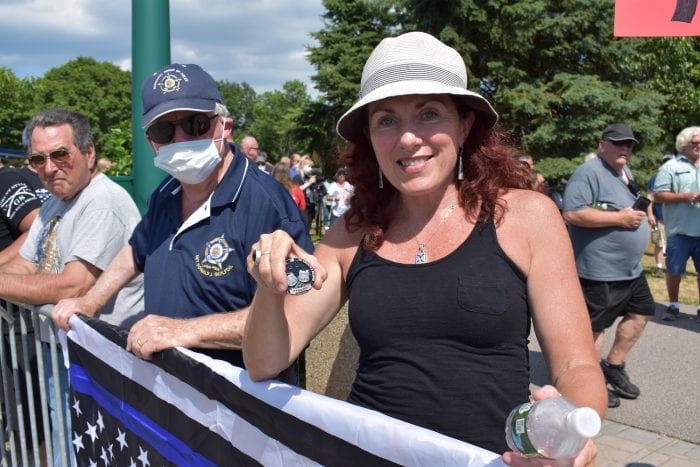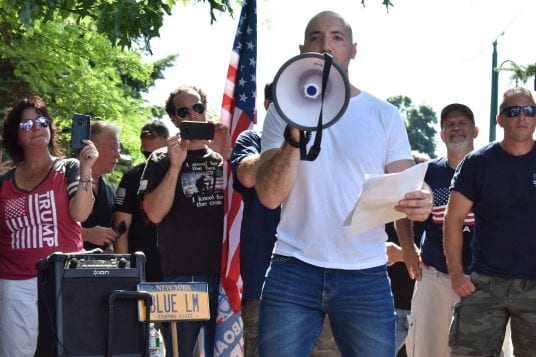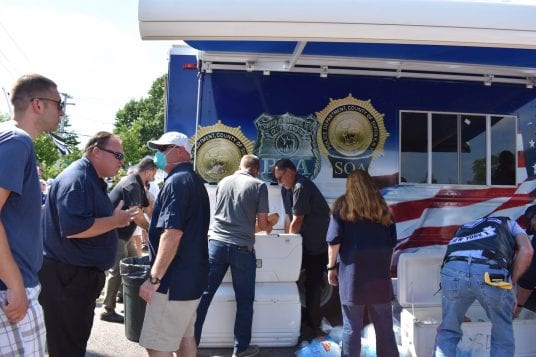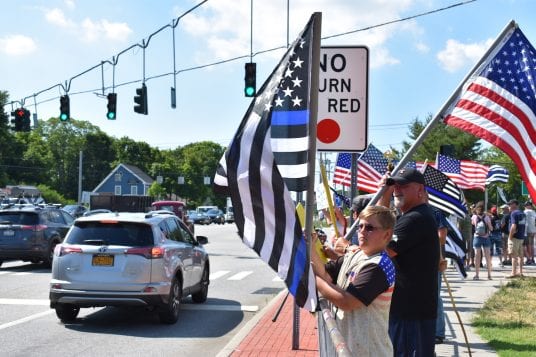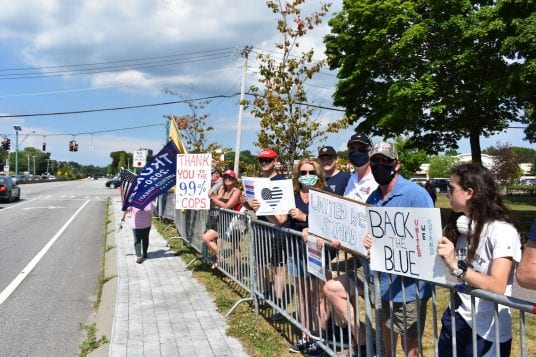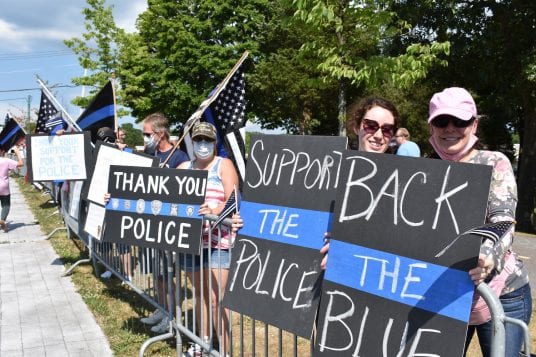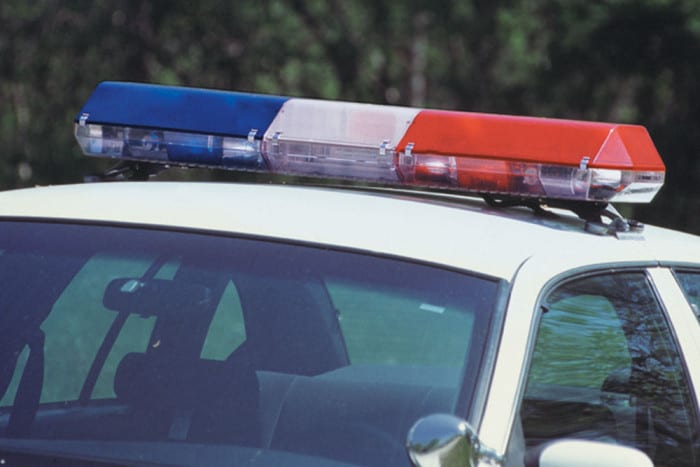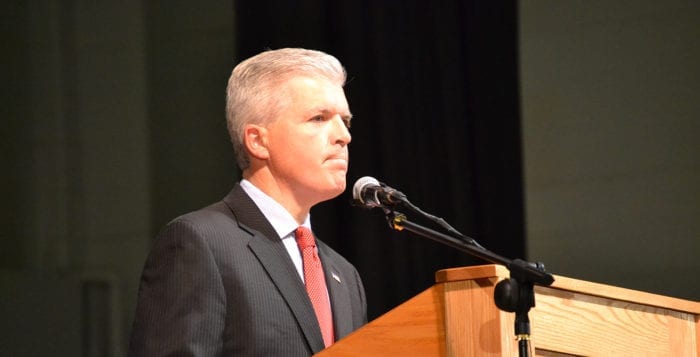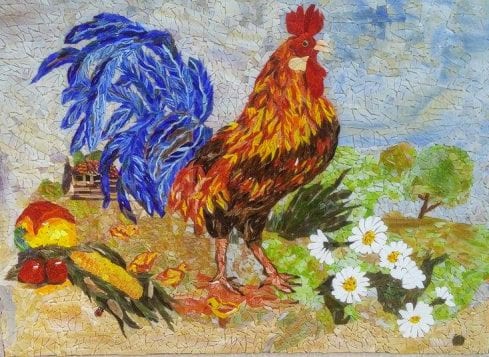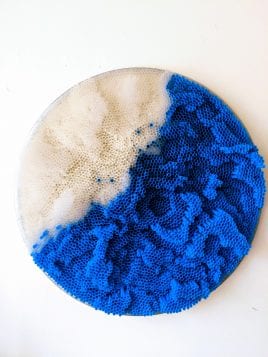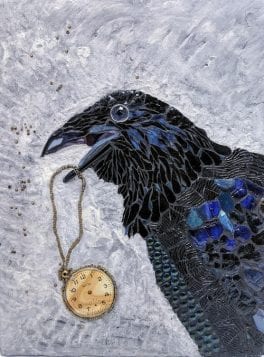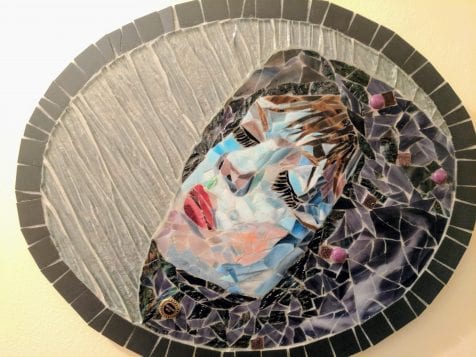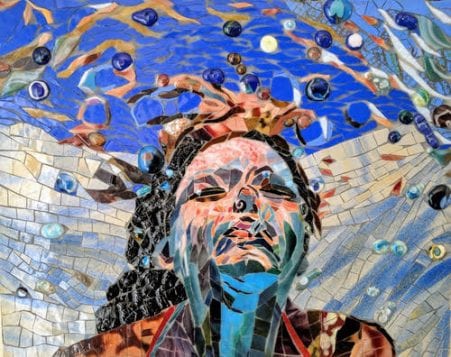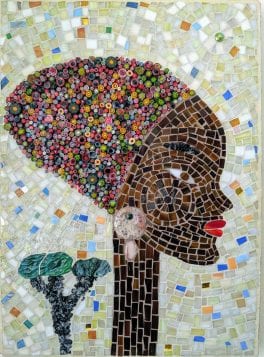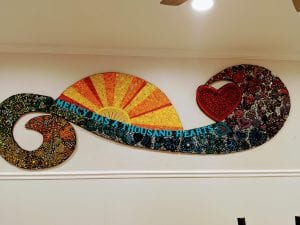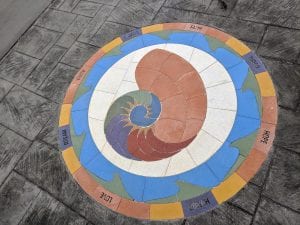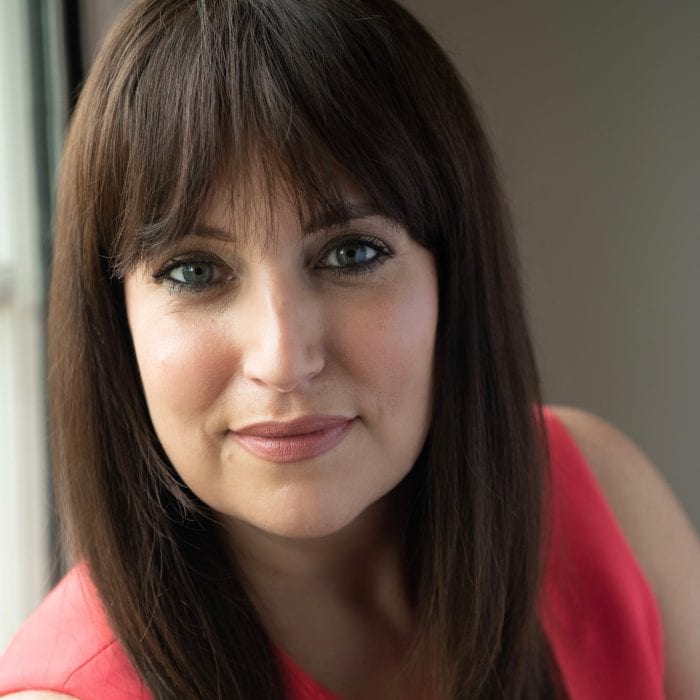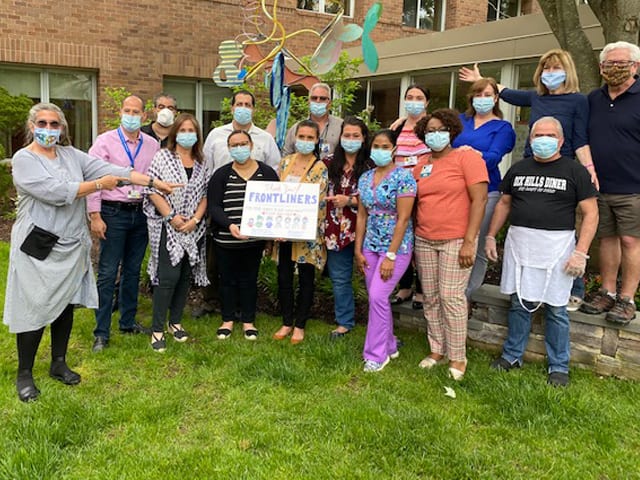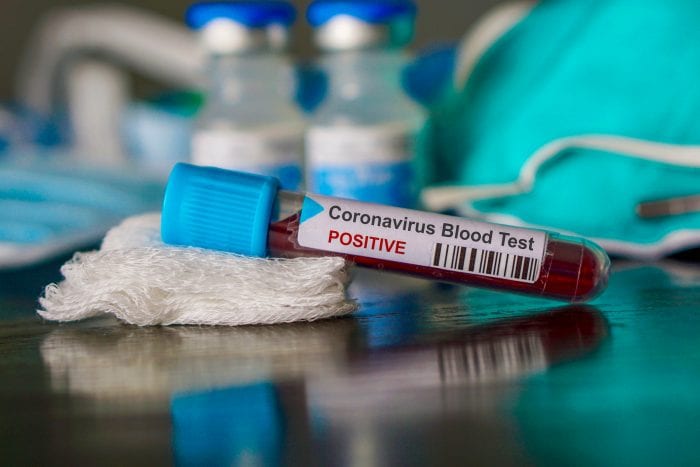Crowds numbering in the several hundreds rallied at the corner of Route 112 and 347 in Port Jefferson Station June 22 calling for people to support police. It was a counterpoint to the over 100 protests all across Long Island calling for an end to police violence for the past several weeks.
People waved thin blue line flags and held signs supporting police reading “back the blue” and “respect and honor our law enforcement.”
The pro-police rally came three weeks after a protest against police violence in the same location, which some local progressive activists have called “resistance corner.” Some came with flags, signs or hats supporting President Donald Trump (R). Most people in the crowd at the June 22 rally were not wearing face masks, compared to other recent protests where the majority were wearing some kind of face covering.
Suffolk County Police officers stood at both sides of the protest line and entrance to the small park, and others milled about the crowd, with many people thanking them for their service. Most cars passing by honked in support, though there was a small number of counter protesters holding signs supporting Black Lives Matter on the other side of Route 347. Towards the start of the rally a woman pulled to the side of the road and got out of her car, cursing at the people standing on the sidewalk who responded with expletives of their own before a cop came by to tell her to get back in her car.
People at the rally said police have become disrespected since the start of the nationwide protests after the death of Minneapolis man George Floyd in police custody. Though they admitted what the police did in that situation was wrong, when one officer leaned his knee on Floyd’s neck for nearly nine minutes until EMTs arrived, they said most cops want to do good.
Annemarie Lopez, of Port Jefferson, said she was at the rally in remembrance of her brother, Christie Masone along with his partner Norman Cerullo who were shot and killed in the line of duty in 1978.
“There are good cops and bad cops, but these are people putting their lives on the line,” Lopez said.
Others said the calls for police budgets to be cut will ultimately make the Island less safe.
“Cops are being treated unfairly — this will be detrimental to our safety, we don’t need cuts to police,” said Maria Leonette, a nurse at Stony Brook University Hospital.
The Suffolk County Police Benevolent Association had a large presence, sporting a trailer which handed out water to people during the hot June afternoon.
PBA President Noel DiGerolamo saw it as an incredible turnout that showed a “humbling support for the men and women of law enforcement. The silent majority isn’t silent anymore.”
At the height of the rally, the crowds gathered under the trees in the center of the park to hear people speak, including former chairman of the Suffolk County Republican Party John Jay LaValle, who was introduced as a spokesperson for Trump.
One of the two main organizers for the rally, Jonathan Stuart of Manorville, said “I could not let the broad stroke of social justice, virtue signaling and cancel culture paint all the police in the shot of the heinous death of George Floyd,” adding, “Is every person who puts on their bullet proof vest, turn their radio on, holster their pistol, shine their badge and kiss their family goodbye a murderer? No. Racist? No.”

